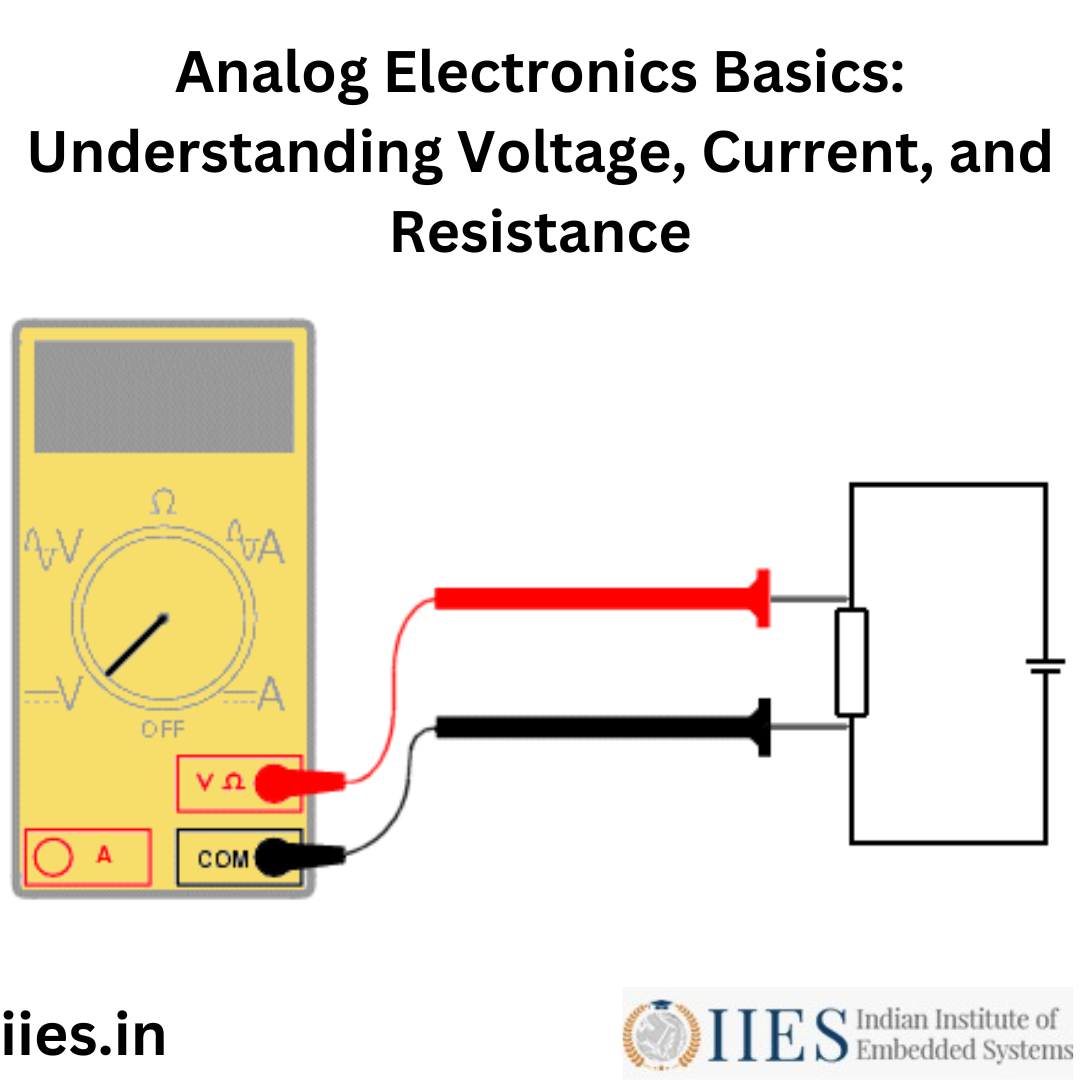Introduction
In the realm of electronics, analog circuits serve as the foundation for a wide range of applications, including embedded systems. To embark on a journey into the world of embedded systems, it's crucial to grasp the fundamentals of analog electronics. In this blog, we'll explore the basics of voltage, current, and resistance—the building blocks of analog electronics—while highlighting their significance in the context of embedded systems.
What is Analog Electronics?
Analog electronics deals with continuous signals that vary smoothly over time. These signals can represent various physical quantities such as voltage, current, temperature, and more. Understanding analog electronics is essential because it underpins the functionality of many embedded systems, from sensors and data acquisition to control systems.
Voltage: The Driving Force
Understanding Voltage
At its core, voltage (V) is the electrical potential difference between two points in a circuit. It is often compared to the pressure in a water pipe, as it pushes electrons through a conductor. Voltage is typically measured in volts (V) and is a fundamental concept in analog electronics.
Voltage in Embedded Systems
Embedded systems rely on voltage to power and control various components. For example, a microcontroller in an embedded system requires a stable voltage supply to function correctly. Understanding voltage regulation and how to provide a consistent power source is crucial in embedded system design.
Current: The Flow of Charge
Understanding Current
Current (I) is the flow of electric charge through a conductor. It represents the rate at which electrons move through a circuit. Current is measured in amperes (A) and can be compared to the flow of water in a pipe.
Current in Embedded Systems
In embedded systems, managing current is essential for ensuring that devices operate within their specified limits. For instance, sensors that measure temperature or light intensity generate electrical currents proportional to the measured quantity. Understanding how to interface and process these currents is vital for accurate data acquisition in embedded systems.
Resistance: The Opposition to Flow
Understanding Resistance
Resistance (R) is a property of a material or component that opposes the flow of current. It is measured in ohms (Ω). In practical terms, resistance limits the flow of electrons, much like a narrow pipe restricts the flow of water.
Resistance in Embedded Systems
In embedded systems, resistors are commonly used to control current and voltage levels. They play a critical role in voltage dividers, current-limiting circuits, and signal conditioning. Understanding how to select and use resistors is crucial for designing reliable and efficient embedded systems.
Ohm's Law: The Fundamental Relationship
Ohm's Law
Ohm's Law, formulated by Georg Simon Ohm, is a fundamental principle in analog electronics. It states that the current (I) flowing through a conductor between two points is directly proportional to the voltage (V) across the two points and inversely proportional to the resistance (R) between them. Mathematically, Ohm's Law is expressed as:
�=�×�V=I×R
Applying Ohm's Law in Embedded Systems
In embedded systems, Ohm's Law is the cornerstone for understanding and predicting the behavior of circuits. Whether you're designing voltage dividers for sensor interfacing or calculating current limits for LEDs, Ohm's Law provides the foundation for making informed design decisions.
Conclusion
Understanding the basics of analog electronics—voltage, current, resistance, and Ohm's Law—is essential for anyone venturing into the world of embedded systems. These principles form the bedrock upon which embedded systems are built, and mastering them is key to creating efficient and reliable electronic solutions.
If you're passionate about delving deeper into the exciting realm of embedded systems, consider exploring the Indian Institute of Embedded Systems (IIES). They offer a diverse range of courses and learning opportunities that can equip you with the knowledge and skills necessary to excel in the field of embedded systems.
Begin your journey into the world of embedded systems. Explore IIES today and unlock the potential of these transformative technologies!
Disclaimer: This blog is for informational purposes only and does not constitute professional advice. Always conduct thorough research and consult experts for specific analog electronics and embedded systems projects and learning opportunities.





